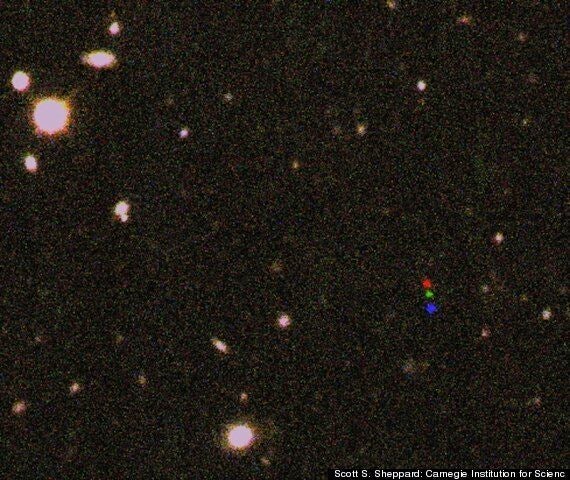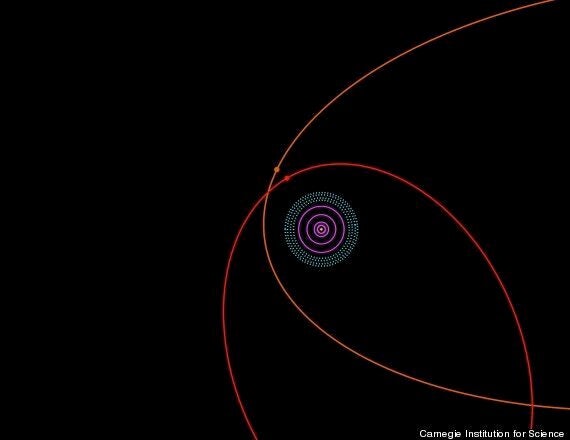Astronomers have made the amazing discovery of a new dwarf planet at the edge of the Solar System - and the hint is there could be hundreds more.
Some of them might even be as big, or bigger, than Earth.
The very distant, very cold world was discovered within the region known as the inner Oort cloud, from which comets and many asteroids originate.

Above: The discovery images of 2012 VP113, which has the most distant orbit known in our Solar System. The dwarf planet is the three coloured dots, showing the path of its orbit.
The newly found body is known as 2012 VP113, and has the most distant orbit around the Sun known in our Solar System - in fact it only makes one journey around the Sun every 4,000 years.
At its closet point to the Sun the object comes no closer than 76 AU (or 76 times the distance from the Earth to the Sun). At its most distant it reaches 940 AU from the Sun, or almost 19 times further than the orbit of Pluto.
Scientists speculate that the dwarf planet was probably created closer to the sun, and dragged out by another planet or a star passing close to our galaxy.
The dwarf planet is thought to be about 280 miles wide, but astronomers say its existence, along with that of Sedna (the only previously known dwarf planet found in the inner Oort cloud) suggests there could be "hundreds" more.

Above: The orbits of the four giant planet Jupiter, Saturn, Uranus and Neptune are shown by purple solid circles. The Kuiper Belt (including Pluto) is shown by the dotted light blue region just beyond the giant planets. Sedna's orbit is shown in orange while 2012 VP113's orbit is shown in red.
"These two objects are just the tip of the iceberg," study co-author Chadwick Trujillo, of the Gemini Observatory in Hawaii, told Space.com.
"They exist in a part of the solar system that we used to think was pretty devoid of matter. It just goes to show how little we actually know about the solar system."
Scott Sheppard from the Carnegie Institution of Science in Washington DC told the BBC that "there's a lot more sky out there" to search.
"Our survey covered just a very small area of the sky - about 220 full Moons of sky. So, there's a lot more sky out there, and we predict, based on this one object, that across the whole sky we could expect to find 900 objects of 1,000km or bigger in size.
It's so cold that the ice would be harder than the rock on Earth”
"Some of these could be bigger than Pluto; some could even be bigger than Mars or the Earth. The problem is they're just so distant, especially when they're in the far parts of their orbits, that they're just too faint to detect."